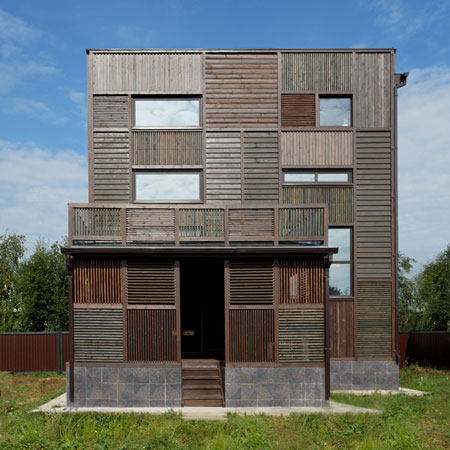
Wood Patchwork House by Peter Kostelov
Architect Peter Kostelov has completed a riverside summer house in Tverskaya, Russia.
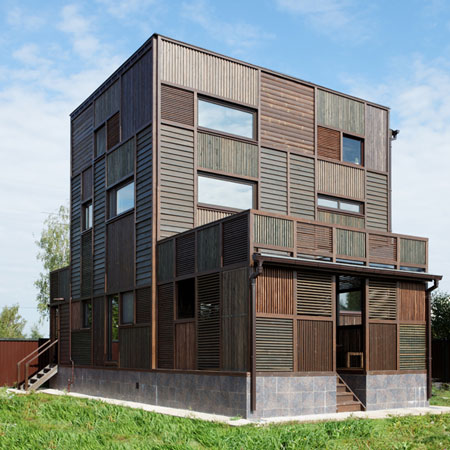
Called Wood Patchwork House, the building has a surface divided into rectangles and clad in an assortment of wooden slats painted in different colours.
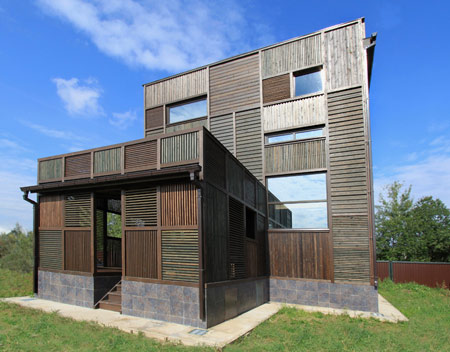
The house overlooks the Volga river in the Tverskaya region of Russia.
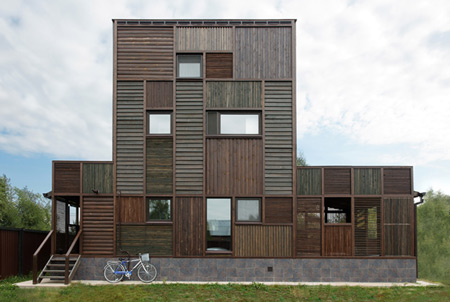
The house was built as a second home - dacha in Russian - and has three storeys to allow guests the best view of the river from their window.

The clients asked for the building to comfortably house four adults, some of whom would work from home, and a few guests.
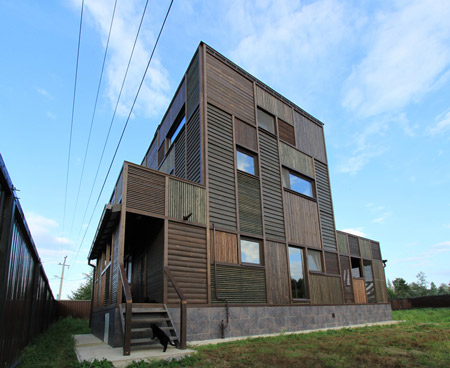
It contains a kitchen, dining room, guest rooms and bedrooms, multiple bathrooms, a studio, two wardrobe rooms and two verandas.
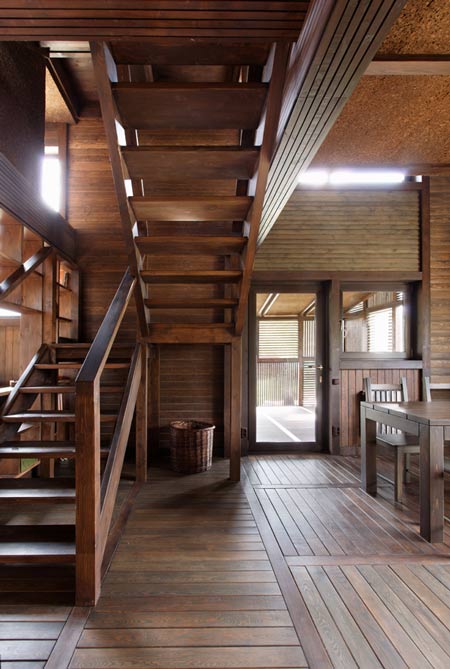
The interior carries on the theme of slatted wood, and the living spaces are arranged around a central wooden staircase.

See our previous story about an apartment in Moscow by Kostelov.
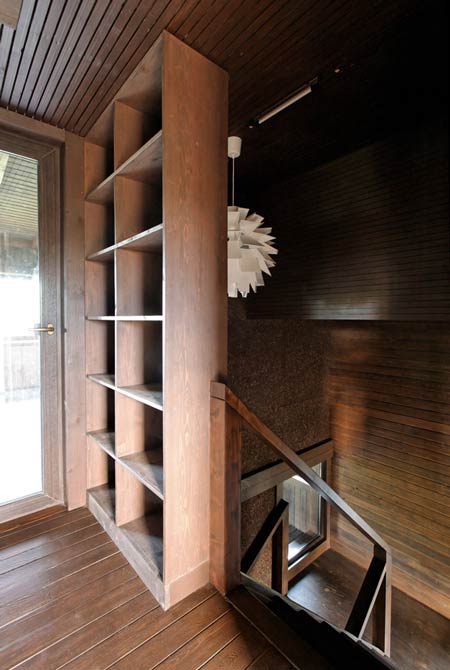
Photographs are by Alexey Knyazev.
Here's some more information from Peter Kostelov:
--
Russian Wood Patchwork House: “DACHA”
Conditions
The plot where the future summer cottage was planned to be built is located quite near the Volga River in a small village in Tverskaya Region, Konakovsky District and is on the way to Saint Petersburg, 140 km from Moscow.

The blocked foundation of 6,500 mm times 8,700 mm size was already laid there.
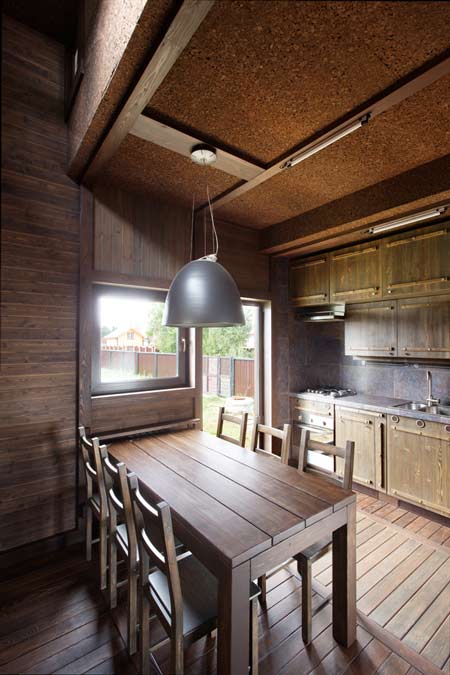
Thus it set the gabarit size of future cottage (Russians call them “dacha”).
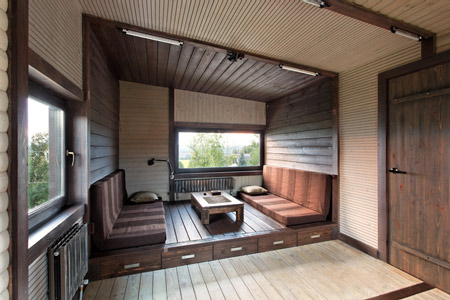
Extra supports were specially made for open space terrace and shed.
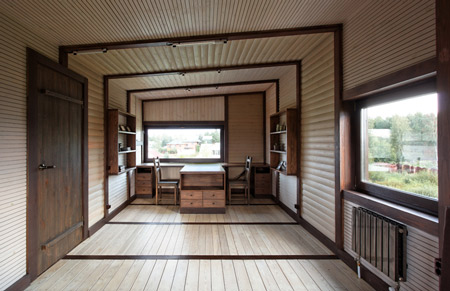
Frame and wainscot technology was implemented in the construction.
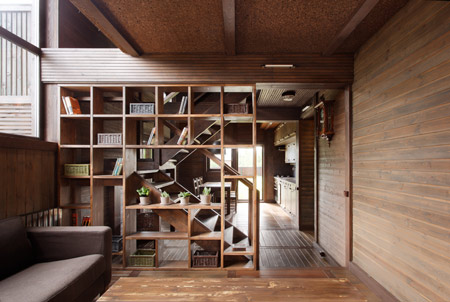
Panels being heated by insulation materials and pellicle are made from squared timber 140mm times 45mm size which are inside and outside trimmed by OSB followed by finishing.
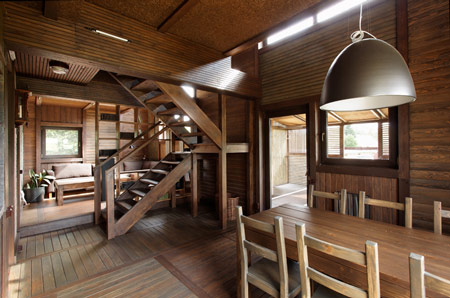
Why three levels cottage? Firstly, terrific view of the Volga is available only when one is on the 3d floor.
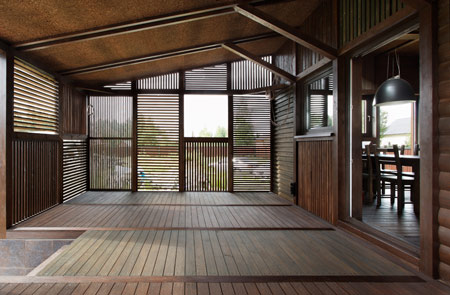
Secondly, hardly would it be possible to place all purpose rooms only on two floors.
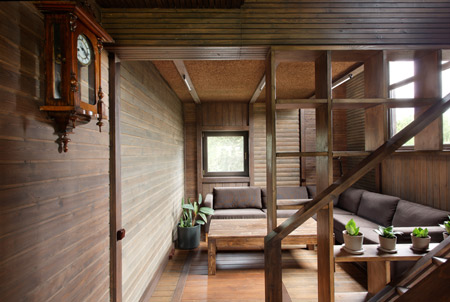
Function
The design envisages comfortable living of two adult couples-parents and grown up children if to work at home and permanently live here.
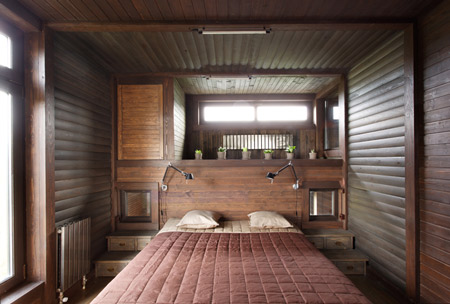
Apart from this the family hosts a few guests too. So the house looks like this:
1st floor: kitchen and adjusting dining room, quests room, boiler room, bath and shower, summer veranda.
2nd floor: two bedrooms, two wardrobe rooms, washing room, two toilet and shower rooms.
3d floor: work shop or studio, sauna, summer veranda, toilet and shower room.
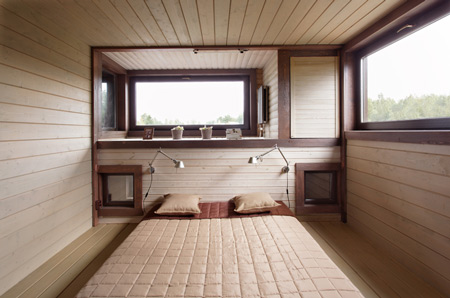
Art
Artistic design of the house is a combination of simple layout of the house with clear functioning of it and a facade composed of various shape and color wooden patchworks.

Practically all types of trimming are being implemented here.
a) traditional wooden overlapping planks as well as just wooden planks;
b) modern molded board, forged square timber;
c) unconventional trimming for which spade hafts and square timber of various section were implemented;
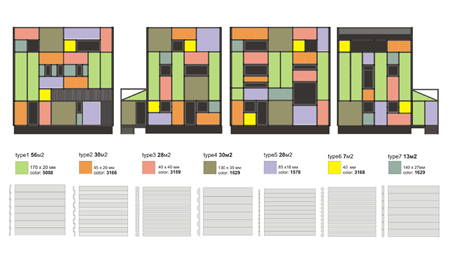
To reach desirable effect trimming fragments were painted in different shades of brown and were fixed at various angles so that the same fragments would reflect the sunlight in different ways.
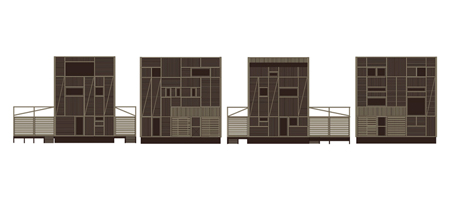
The source of it goes back to Soviet era style, when private house construction industry used to be rundown and backward, which can be explained by many reasons.
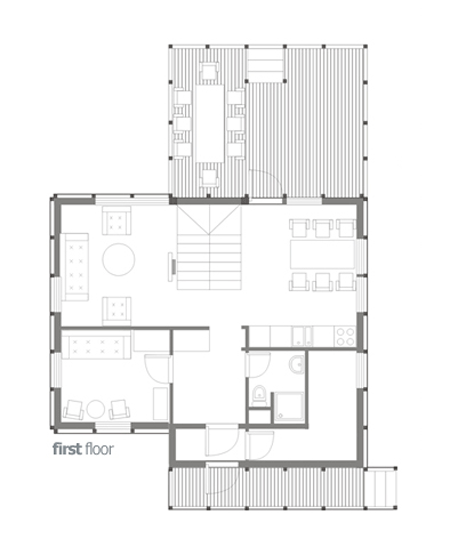
Those who managed to build so called “dachas” implemented practically all handy materials which happened to be available.
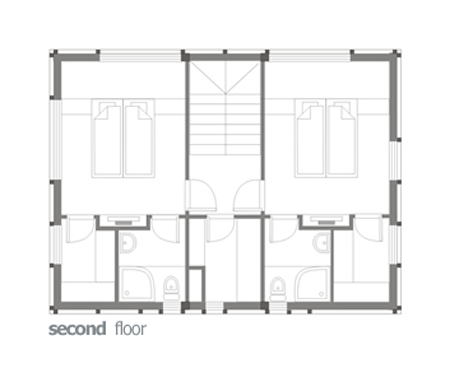
As a result the houses looked like patched blankets consisting of different fragments which clearly showed who the owner of the “dacha” were precisely at the moment of construction.
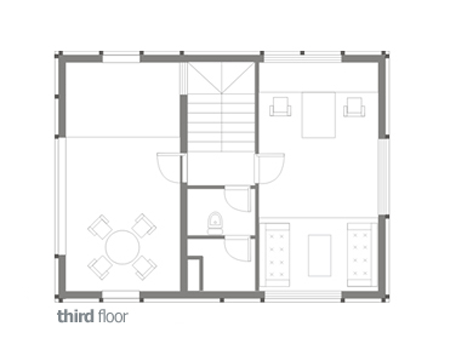
Data
Location: Alexino village, Konakovsky District, Tverskaya region, Russia
Plot: Plane plot between forest and Volga river
Site area: 86 m2
House area: 133 м2,
Terraces area 48 м2
Architecture, Interior Design: Peter Kostelov
Development effort: Alexey Lyalin
Wood construction: zao «NLK Domostroeniye»
Developer: zao “Orbat”, Andrey Tolstoy
Furniture making: Vladimir Kostelov
Projecting: 2005-2006
Building: 2007-2009